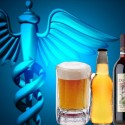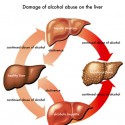Adverse Consequences of Binge Drinking
In the United States, a standard drink is one that contains about one-half an ounce of pure alcohol. Generally, this amount of pure alcohol is found in 12 ounces of regular beer, 10 ounces of wine cooler, 8 ounces of malt liquor, 5 ounces of wine or one-and-a-half ounces of 80-proof distilled spirits or liquor such as whiskey, vodka, gin or rum.
The National Institute of Alcohol Abuse and Alcoholism defines binge drinking as a pattern of drinking that brings a person’s blood alcohol concentration to 0.08 percent or above. This typically happens when men consume five or more drinks and women consume four or more drinks in about two hours. Yet, most people who binge drink are not alcohol dependent.
Consider the following statistics from the Centers for Disease Control and Prevention and the U.S. Department of Justice Office of Juvenile Justice and Delinquency Prevention:
– Seventy percent of binge drinking episodes involve adults over the age 25 years.
– Binge drinkers are 14 times more likely to report alcohol-impaired driving than non-binge drinkers.
– About 90 percent of the alcohol consumed by youth under the age of 21 in the United States is in the form of binge drinks.
– About 75 percent of the alcohol consumed by adults in the United States is in the form of binge drinks.
– The proportion of current drinkers that binge drink is highest in the 18 to 20 year old group at 51 percent.
– The prevalence of binge drinking among men is two times the prevalence among women.
Additionally, heavy drinking is defined as men consuming more than 14 drinks per week, and women consuming more than seven drinks per week on average. Excessive drinking includes heavy drinking, binge drinking or both. Excessive alcohol use has immediate effects that increase the risk of many harmful health conditions. These immediate effects are most often the result of binge drinking and include:
– Unintentional injuries, including traffic injuries, falls, drownings, burns and unintentional firearm injuries.
– Violence, including intimate partner violence and child maltreatment. About 35 percent of victims report that offenders are under the influence of alcohol.
– Alcohol use is also associated with two out of three incidents of intimate partner violence.
– Risky sexual behaviors, including unprotected sex, sex with multiple partners and increased risk of sexual assault. These behaviors can result in unintended pregnancy or sexually transmitted diseases.
– If pregnant, miscarriage, stillbirth and a combination of physical and mental birth defects that last throughout life.
– Alcohol poisoning, a medical emergency that results from high blood alcohol levels that suppress the central nervous system and can cause loss of consciousness, low blood pressure, low body temperature, coma, respiratory depression, or death.
source: Hurlburt Field


